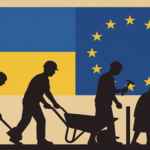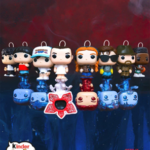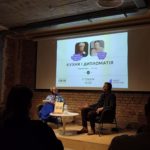
(book review)
10/10. Wolfgang Schivelbusch is a German scholar of cultural studies, historian, and author. His book “Tastes of Paradise: A Social History of Spices, Stimulants, and Intoxicants” was published in 1980. In 2016, “Anetta Antonenko Publishing House” published this book in Ukrainian. It is a researched look at pleasurable vices.
The book describes the history of the formation of spices, stimulants, and intoxicants. Shivelbusch tells the story of the appearance of spices, coffee, tea, chocolate, tobacco, beer, vodka, drinking establishments, and opium. There’re many illustrations of that time: cover pages and book frontispieces; pictures; portraits; images from magazines; advertising etc. Information is categorized to simplify navigation and understanding. The author uses interesting and little-known facts. Each image has its own explanation, which helps not to lose the essence.
The first chapter was devoted to the spices. In medieval Europe, it was customary to add as many spices as possible. First of all, it suggested affluence. Due to export, spices had a high price. Secondary, it helped to hide the taste of stale products. Salt was a major preservative and was highly regarded. Now we neglect salt and spices. We can but they are everywhere.
The author tells how coffee, tea, and chocolate appeared in Europe. In the 17-18 centuries, they were exotic drinks. First, coffee, tea, and chocolate were only available to the aristocracy. Services have come into fashion as an accessory to these products. But over time, they became available to everyone and coffee houses turned into especially popular places. According to documents of the 1700s in London, there were about three thousand coffee houses. In the 17-18 centuries coffee paradise places played an important social role: they were centers of communication, commerce and journalism. I was astonished that in the early 18th century, London weekly editors used coffee houses as their editorial offices. Richard Still, “Tatler” editor, presented the address of the Greek coffee shop as his editorial. And in the 18th century, coffee houses became the second home of writers.
A little known fact: chocolate was considered as a stimulant and also was a popular drink in two Catholic countries — Italy and Spain. Unlike coffee or tea, chocolate is a hearty product. As it was said by Linda Grayson, “There is nothing better than a friend, unless it a friend with chocolate.” Since this drink was allowed during fasting, it became vital in Catholic Italy and Spain.
I made the connection with nowadays and understood why some products are popular, and how some things losing their value. Also, knowing the history of stimulants, you can make predictions about the future of some modern popular products. I recommend reading this book to anyone interested in sociology, history or economics. After this book, you will look at spices completely differently.


























































Залишити відповідь